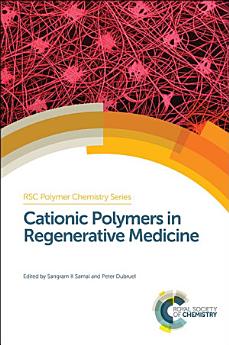Cationic Polymers in Regenerative Medicine
এই ইবুকখনৰ বিষয়ে
Cationic Polymers in Regenerative Medicine brings together the expertise of leading experts in the field to provide a comprehensive overview of the recent advances in cationic polymer synthesis, modification and the design of biomaterials with different structures for therapeutic applications. Chapters cover recent developments in novel cationic polymer based systems including poly(L-lysine), Poly(N,N-dimethylaminoethyl methacrylate) and cationic triazine dendrimers as well as cationic polymer-coated micro- and nanoparticles and cationic cellulose and chitin nanocrystals. Applications discussed in the book include drug and gene delivery, therapeutics in thrombosis and inflammation as well as gene therapy.
Suitable both for an educational perspective for those new to the field and those already active in the field, the book appeals to postgraduates and researchers. The broad aspects of the topics covered are suitable for polymer chemists interested in the fundamentals of the materials systems as well as pharmaceutical chemists, bioengineering and medical professionals interested in their applications.
লিখকৰ বিষয়ে
Dr. Sangram Keshari Samal received his PhD degree in Biomaterials from the School of Biomolecular Science, University of Pisa, Italy. During his PhD, he was a visiting fellow at BWH, HST-MIT and Tufts University, USA. He undertook his first postdoctoral research at Consiglio Nazionale delle Ricerche, Bologna, Italy. At present he is a post-doctoral fellow at the Polymer Chemistry & Biomaterials Group, Department of Organic Chemistry, University of Ghent, Belgium. His research interest is mainly focused on functionalization of polymers and evaluation of their potential for various therapeutic applications.
Prof. Peter Dubruel is currently heading a group of over 30 people and has published over 100 A1 papers. Since the start of 2006, he has been involved in several EU projects (3 FP6 and 4 FP7, 1 as a coordinator). Since end 2006, he has delivered over 20 invited lectures. He has been the spokesperson of the Young Scientist Forum (YSF) from the European Society for Biomaterials (ESB) for more than 5 years. He is part of the editorial team of BIOMAT.net and the journal Biomaterials. In 2010 and 2012, he was awarded, respectively, the YSF Excellence Award from the Romanian Society for Biomaterials and the Jean Leray Award from the ESB in 2013.




